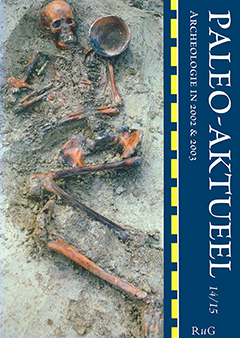Hergebruik van hout in de prehistorie?
Samenvatting
Three Late Mesolithic (c. 6400 BP) upright stakes, driven through rectangular holes in a Pinus sylvestris log (c. 9600 BP), were found during an excavation near the Tjonger river in the Dutch province of Friesland in 2002. This construction may have been part of a fish weir. Several Neolithic and BronzeAge fish weirs have turned up in excavations in different parts of the Netherlands. In Denmark some Mesolithic fish weirs have been found, besides numerous Neolithic weirs. In these weirs the stakes were driven directly into the sediment. If the structure near Jardinga is part of a fishweir, it would be the first excavated prehistoric weir with a wooden foundation. One of the stakes continued upright over a length of at least 90 cm. From this, as from the find of seeds of Nymphaea and Nuphar, it was deduced that the construction was placed in nutrient-rich water at least 1 m deep. Pointed stakes of the Swifterbant period (c. 5500–5000 BP) and the Bronze Age (c. 4000–3000 BP), also found during the excavation, show that the location was used on many occasions, over a long period of time.

